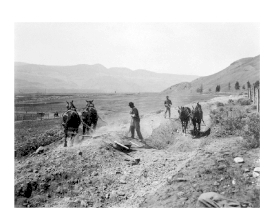During a recent tour of Victoria’s beautiful Ross Bay Cemetery, Old Cemeteries Society guide John Adams pointed out the headstone for onetime U.S. Consul Allen Francis.
Coincidentally, in his latest bestselling history book, Untold Stories of Old British Columbia, friend and fellow historian Dan Marshall pays tribute to a mutual hero of ours, David Williams Higgins, whom I’ve introduced to Chronicles readers on several occasions.
There’s a strong and fascinating connection between Francis and Higgins.
During the 1860s, the time of the American Civil War, Francis served as Consul in Victoria where and when Higgins worked as a journalist. In these professional capacities, their paths often crossed.
Perhaps surprisingly to us today, their connection was that dreadful conflict then raging below the border. Supposedly neutral Victoria was a hotbed of Northern and Southern sympathizers. Besides open rivalry and occasional acts of violence, there was a conspiracy by the pro-Confederates to outfit a privateer with which to hijack a Federal payroll ship.
*******
PHOTO: One of the worst civil wars in history began with the firing by Confederates on Fort Sumter, in South Carolina's Charleston Harbour, on April 12, 1861. Hostilities soon spilled over the U.S.-Canadian border, particularly in western outpost Victoria. —Currier & Ives print, Wikipedia
Read More




















